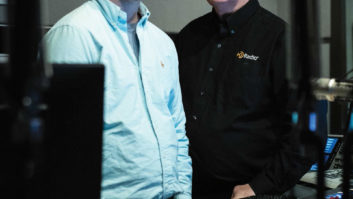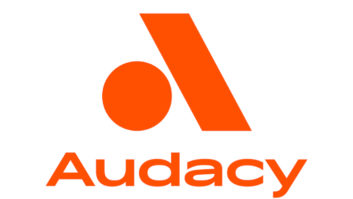The Author Laments the Reduction of AM Bandwidth Just as AM Radio Receives Its ‘Digital Vaccine’
I would like to respond to the well-written article “Clear Channel Reduces AM Bandwidth” (Oct. 20) by Jeff Littlejohn of Clear Channel. He raised several good and foundational propositions, and his initial analysis of the facts as they exist is quite clear.
However, when it comes to his logic in coming to a conclusion, we must part ways.
If we use his conclusion and apply it to the past, several things in broadcast history should never have happened: UHF television’s existence; the AM broadcast band’s expansion to 1700; FM stereo subcarrier broadcasting; color television reception; cellular telephone service; 27 MHz Citizens Band using SSB; and possibly even the Internet.
All of the above would never exist today if we were to solely depend on manufacturers to make equipment capable of such services – one of Mr. Littlejohn’s main arguments – or if such services caused a “little” inconvenience to other broadcast services.
History
In the case of UHF television, the FCC mandated in the 1960s that all television receivers had to include UHF channels, which jumpstarted the industry into UHF broadcasting. The FCC’s 1952 “Sixth Report and Order” decision to add UHF television channels did not appear to be going anywhere.
Regarding the AM broadcast band’s expansion to 1700, this was a forced upgrade for receiver manufacturers, as well. It essentially gave birth to and kept new stations on the air above 1600 kHz.
FM stereo broadcasting as we know it would still require the use of two receivers: both an AM and FM receiver to receive both left and right channel audio. Back in the ’60s, few manufacturers made receivers that could receive AM and FM bands at the same time to hear stereo broadcasts.
Color television reception – maybe we’d still be watching television in black and white.
Our present day cellular telephone service represents a heavy-duty change. If the FCC hadn’t forced UHF television translators “off” Channels 70-83, making room for cell service, we might still be carrying around bulky “low band” or VHF “bag” phones. Can you imagine this?
The use of SSB (Single Side Band) by the 27 MHz. Citizens Band increased its effective range. I am not going to argue the virtues of CB radio – only making a point.
The Internet. Wireless networks. Cordless telephones and more. The list could go on and on.
Reality
Since when has the FCC (or the broadcasting industry, for that matter) made decisions in support of their planned services, based solely upon whether manufacturers were already producing supporting equipment at the time? Maybe never.
Based upon Mr. Littlejohn’s own logic, even Clear Channel’s mega-ownership wouldn’t exist today.
What’s the bottom line?
AM radio’s popularity and use are, and have been for some time, on a steep decline in comparison to FM and satellite radio. FM and satellite radio are growing by bounds, while AM radio is dying, in spite of all the “injections” to cure its ills.
Let’s face it, folks. The main reason AM is not as popular as the others is one single factor and nothing else: audio bandwidth. That’s it, end of story. Whenever one listens to the AM band, all music sounds muffled and drained of its life – empty. Sure, it’s a great place to tune in to distant talk show broadcasts, sports and news, where the audio barely needs to go past a telephone’s voice band. But when it comes to listening to music, the medium of choice is FM, audio CD or satellite radio.
We all know this is reality. Most people I’ve spoken to don’t even turn on their AM radios – and that includes folks I know working in the broadcast industry.
To quote the Hon. Matthew J. Rinaldo (U.S. House of Representatives, June 21, 1989): “According to a recent study, AM radio listeners are just 26 percent of the overall radio audience, down from 75 percent in 1972 – just 16 years ago. About half of the 5,000 AM stations lost money last year … I don’t think any of us want to see the AM band wither away.”
That was back in 1989. I shutter to think of what the stats are today.
But now, AM radio finally has received a hopeful shot in the arm by getting a digital vaccine. And this whole inoculation is still in its beginning stages. But then Mr. Littlejohn comes along and wants to limit the audio bandwidth back to 5 kHz, so who knows who can hear an adjacent-channel NYC station in Ohio slightly clearer, with a bandwidth standard that is so outdated its cobwebs are growing cobwebs? Radios don’t use megaphone horned speakers anymore, ya know?.
If Mr. Littlejohn’s view is to be the line of thinking, why not just get the whole thing over with once and for all, and shut down the entire AM band now to avoid its slow and painful death – and the wasted expense of trying to improve it? What’s the point of going on any further if we limit bandwidth to 5 kHz?
Radio World Online welcomes letters to the editor or replies at [email protected].












